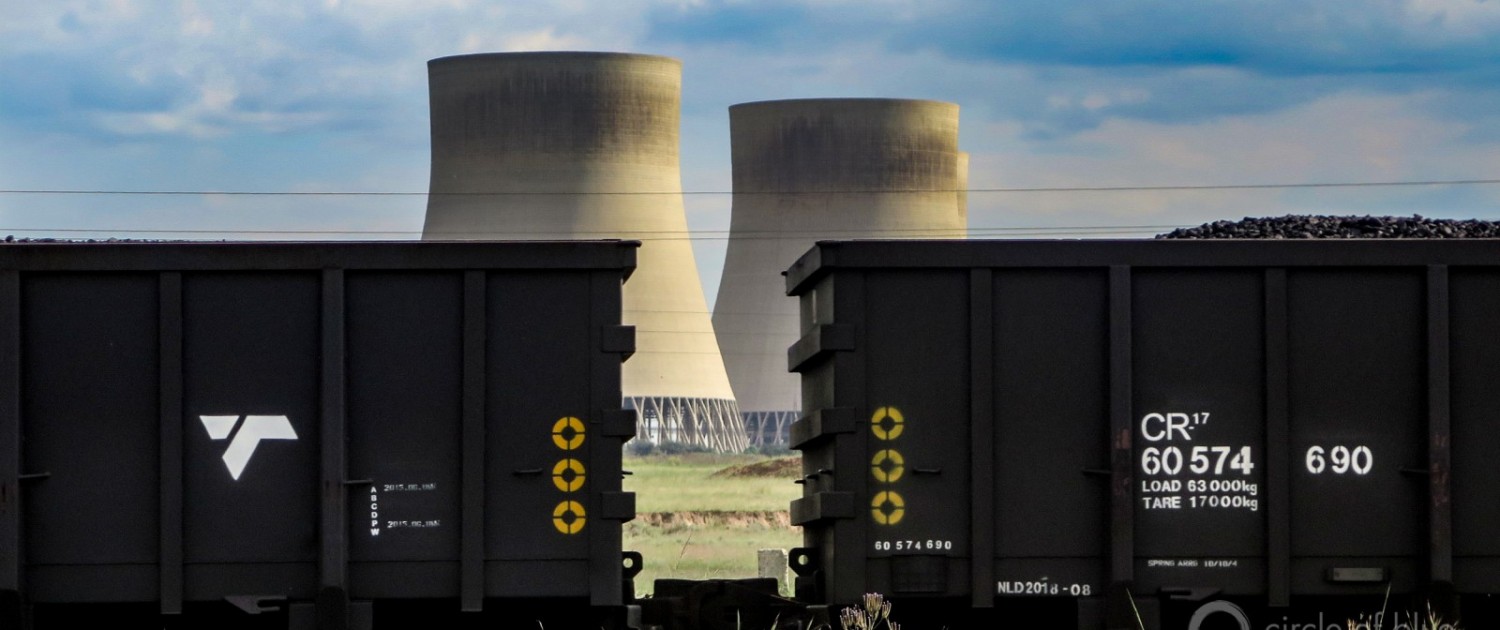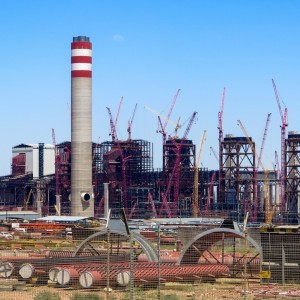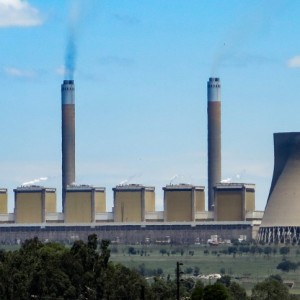
Coal trains form the backbone of South Africa’s coal transport system for power plants and for export. Photo © Keith Schneider / Circle of Blue.
By Keith Schneider
Circle of Blue
During the early years that followed the end of Apartheid and the first multi-racial democratic elections in 1994, South Africa was a nation unleashed. Guided by the first black president, Nelson Mandela, waves of relief and optimism, liberty and passion broke on a wide beach of pent-up human talent and economic possibility.
Schools got built. Electricity, water service, and housing arrived in informal settlements. Universities were opened to all capable students. New jobs helped lift millions of people out of poverty.
The years under Mandela’s management tilted South Africa’s view of itself. A nation that once embraced slavery, and for over a century subjected its majority black residents to a brutal and demoralizing system of fourth-class citizenship, was prepared to right grievous wrongs, pursue grand ideas, and achieve new international stature.
Any number of individual manufacturing plants, or new highways, or capable university-trained engineers and scholars reflected South Africa’s determination to succeed. In 2010, for instance, Durban, the third largest city, hosted the FIFA World Cup soccer championship. A year later the city also hosted the annual United Nations global climate conference.
None of the new government’s early projects, though, encompassed so many of South Africa’s scenarios of hope and accomplishment as the idea to build not one, but two state-of-the-art electrical generating stations that, when completed, would be among the largest coal-fired power plants in the world. And none so closely demonstrate how the early years of passion and optimism that followed the election of South Africa’s first black president have dissolved into a disturbing and potentially dangerous new era of economic hardship, social instability, deepening ecological turbulence, and acute water scarcity.
The idea for Kusile and Medupi was, and still is, firmly rooted in the mega energy project operating principles of the 20th century. In the late 1990s and in the early years of this century, the executives of Eskom, the state-owned electric utility, convened with Mandela’s cabinet and with cabinet departments of his successor, President Thabo Mbeki, to decide on the basic concept for the twin 4,800-megawatt power plants. The talks intensified after Eskom’s plan to develop a new design for nuclear reactors, and build nuclear plants, crashed after global investment markets refused to provide financing for loan instruments that were not guaranteed by South Africa’s treasury.
Construction sites were chosen for Medupi in dry northern Limpopo province, and for Kusile in the agricultural Highveld of Mpumalanga province east of Johannesburg.
Circle of Blue’s senior editor and chief correspondent based in Traverse City, Michigan. He has reported on the contest for energy, food, and water in the era of climate change from six continents. Contact
Keith Schneider





